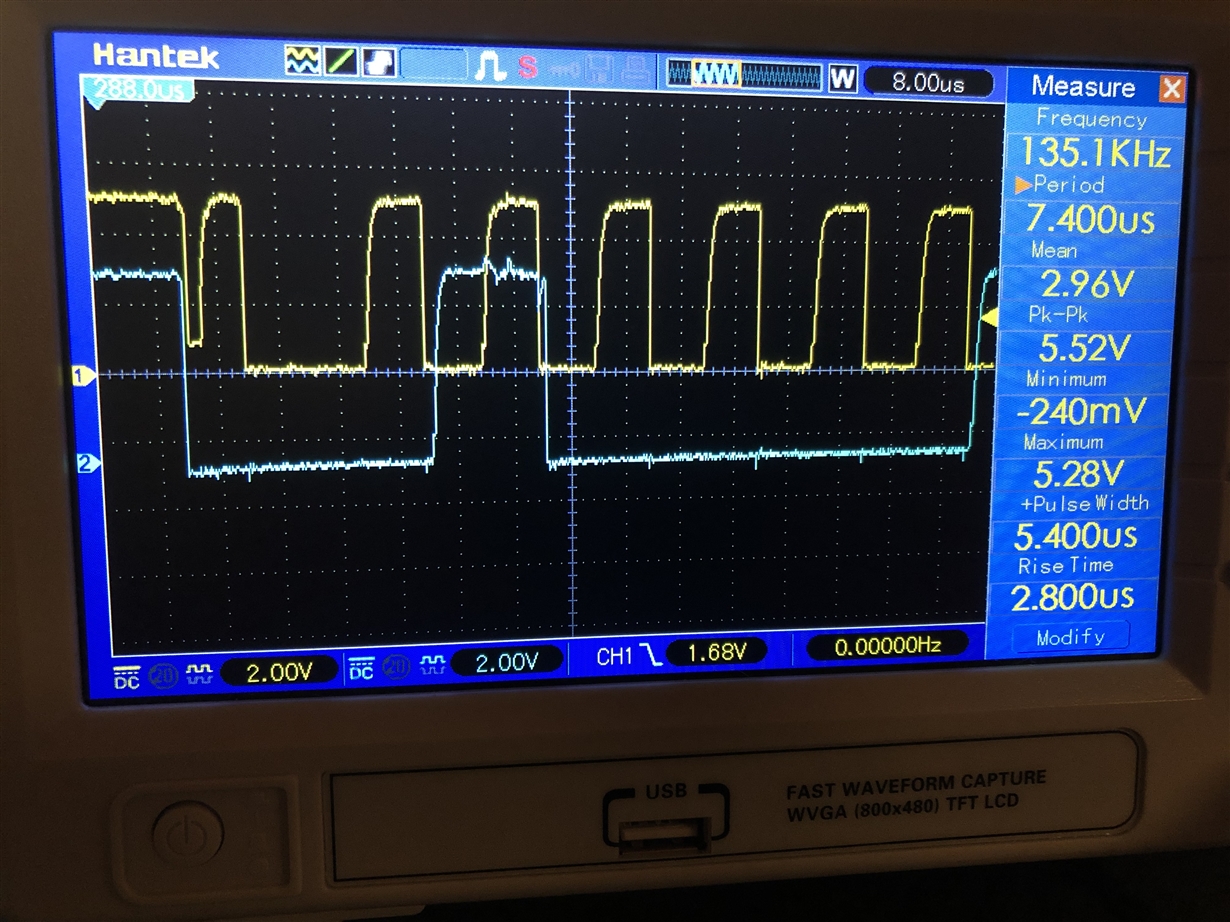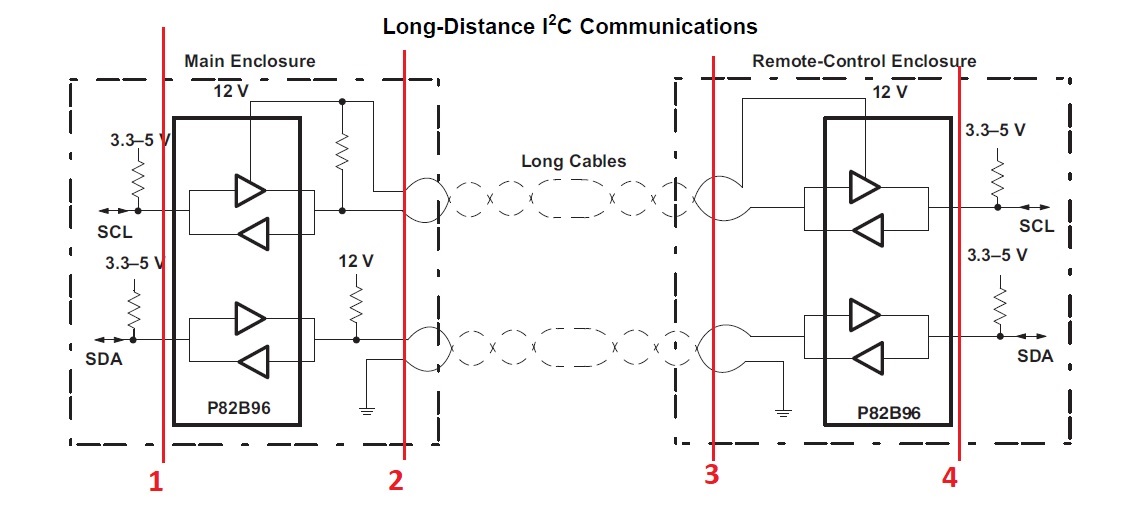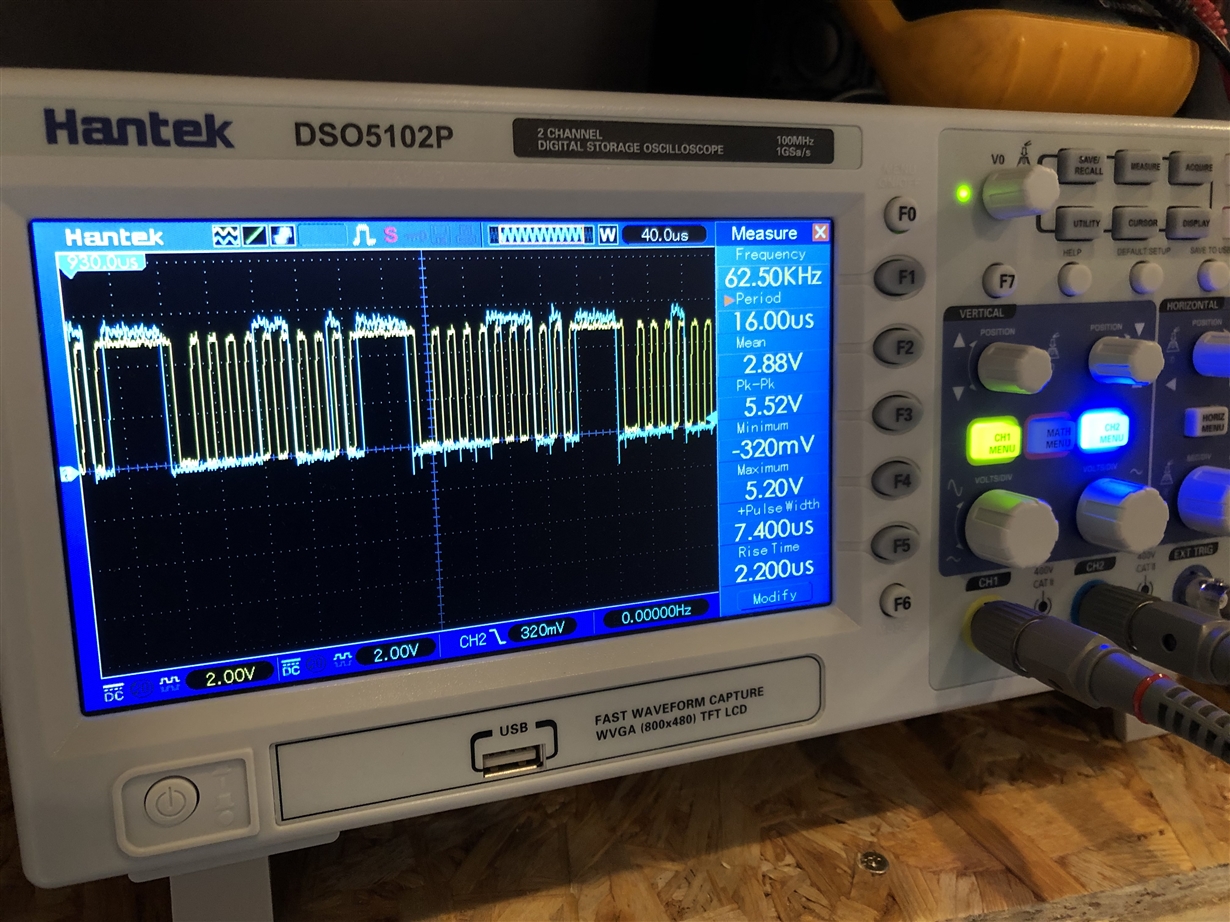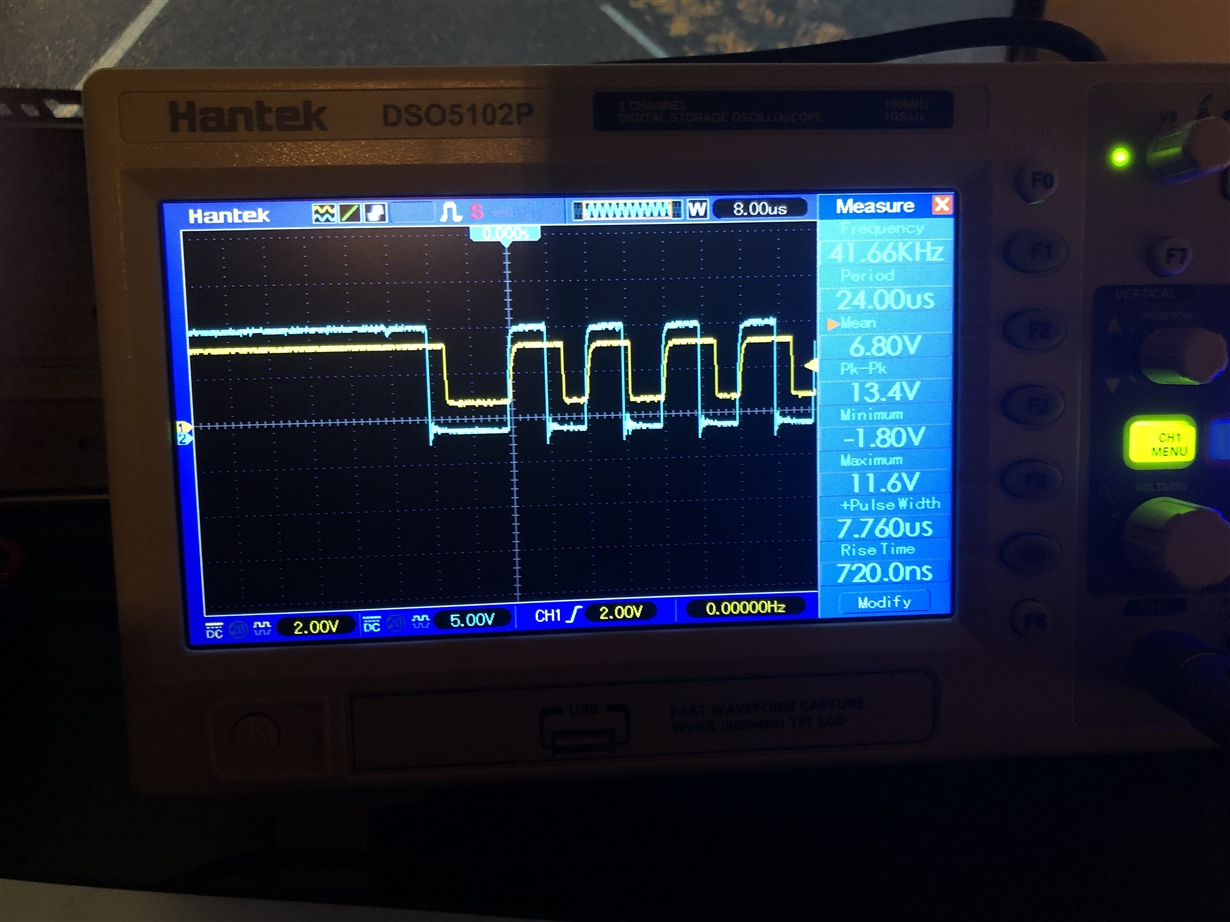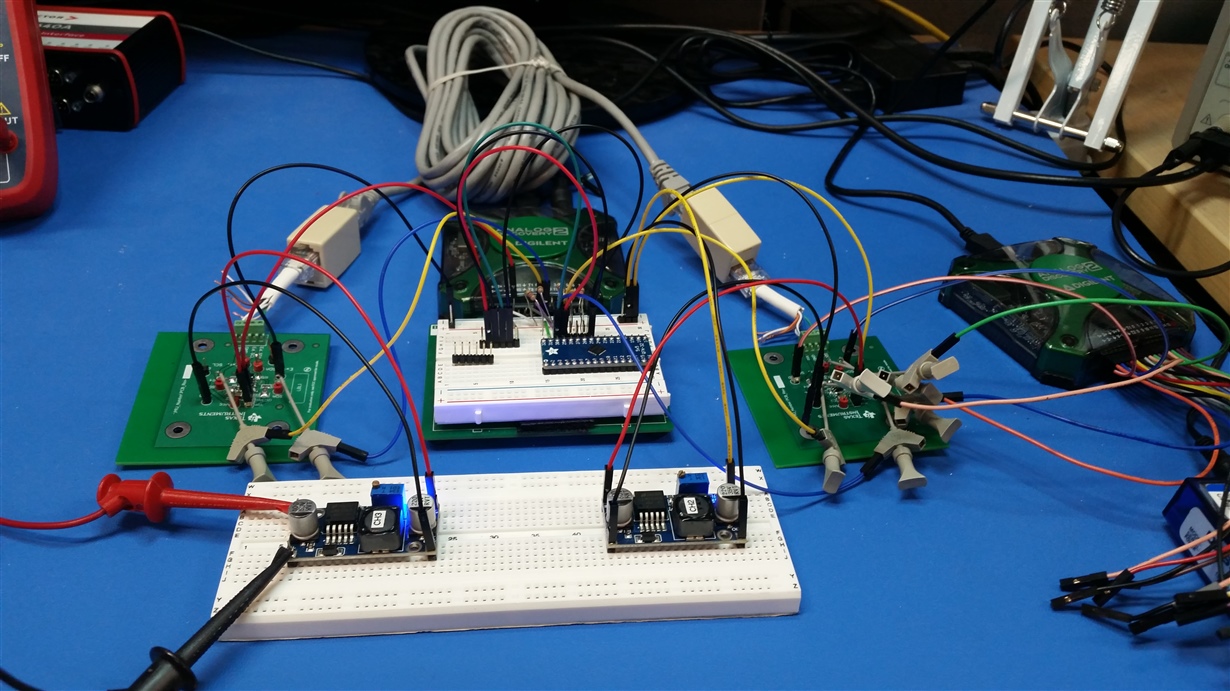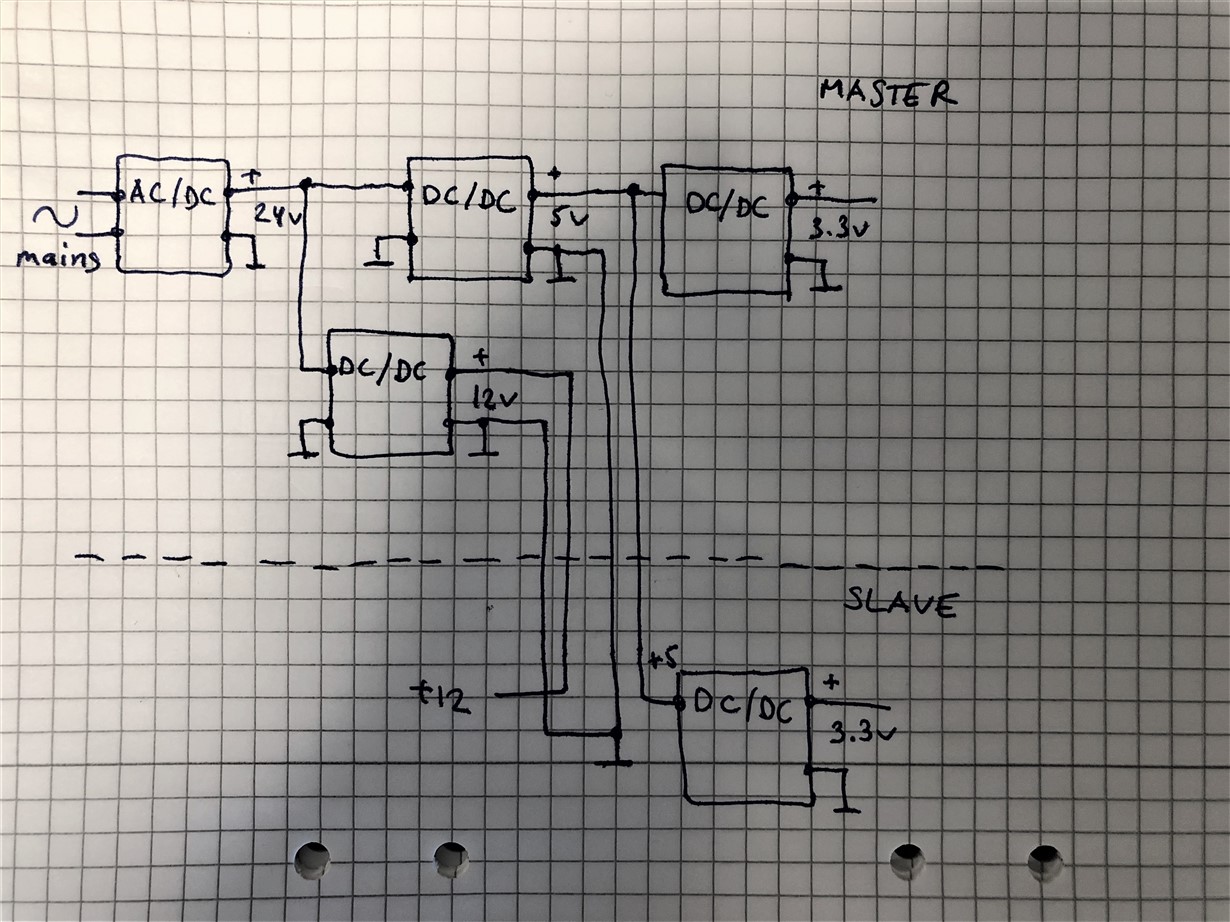Other Parts Discussed in Thread: TCA6424A, LM2596
Hi!
I am having a strange down-spike on the SCL line at the same time the SDA line enters start condition. Please, have a look at the picture.
My original set-up is one I2C master (Raspberry PI) with one slave (MCP23017) and P82B96 on the master board and 4 slave boards connected in a star topology with ca 10 m CAT6 cable per branch. Each slave board has its own P82B96 and MCP23017. I also used logical level convertor on the master side (3.3V/5V).
Due to the above problem I reduced the set-up for troubleshooting and now it boils down to this standard diagram:
The cable has moderate length of about 5-7 m and it is CAT6.
If I connect the slave board directly to I2C master (Raspberry PI) bypassing P82B96 everything looks ok to me and the I2C master sees the slave.
If I disconnect the cable on the remote side thus leaving master P82B96 with cable and pull-up resistors everything looks ok as well.
It is only when I connect everything together the problem arises. Note that the above down-spike is observed in all points 1 through 4 (in red in the diagram).
I tried to play with pull-up resistors but it didn't change anything. Right now I am having pull-up resistors on the I2C side 4K7 and on the bus side (only master) 470R.
I also tried to carry SCL via a separate cable suspecting cross-talk from SDA but it didn't change anything at all. The spike is absolutely persistent, not sporadic. This suggests some kind of a designed behavior.
I checked wiring several times and everything seems to be OK. I am currently out of ideas :-(


